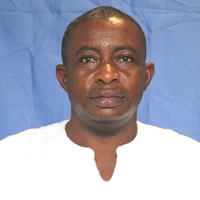Location and size
The Daffiama-Bussie-Issa District was part of the Nadowli District, which was established by the District Assemblies Law 1988 (Republic of Ghana, 1988). The Daffiama-Bussie-Issa District was carved out of the erstwhile Nadowli District in 2012 through Legislative Instrument 2100 with Issa as the capital (Republic of Ghana, 2012).The district is centrally located in the Upper West Region of Ghana and lies between Latitudes 11o 30" and 10o20"North and Longitudes 3o10" and 2o10"West. It is bordered on 2
the south by the Wa Municipality, west by the Kaleo-Nadowli District, north by the Sissala West District and east by the Wa East District. In terms of size, it covers a total land area of 1,315.5 square kilometres and extends from the Billi Bridge (four kilometres from Wa) to the Dapuori Bridge (almost 28 kilometres from Nadowli) on the main Wa – Tumu Road and also from west to east it extends from the Black Volta to Daffiama (see Figure 1.1). Issa, the district capital, is 57 kilometres from the regional capital, Wa.
Climate and Vegetation
The district lies within the Tropical Continental Zone and the annual rainfall is confined to 6 months in a year i.e. May to September and is also unevenly distributed. The mean annual temperature is 32oC and the mean monthly temperature ranges from 36oC in March to 27oC in August. The mean annual rainfall is about 110mm with its peak around August. Between October and March, the district does not experience any rainfall and this long dry season is made harsher by the dry north-easterly Harmattan winds. In the absence of irrigation facilities, the population depends on rain-fed agriculture; and this has been the major underlying reason for the massive out-migration of the youth to the southern part of the country.
The district lies within the Tropical Continental or Guinea Savannah Wood land, which is characterised by shrubs and grassland with scattered medium-sized trees. Some economic trees found include Kapok, Shea, Baobab, Mango and Dawadawa, which are resistant to both fire and drought. These trees provide a major source of income to women to enable them provide their household needs such as food stuff, cooking utensils, etc. These economic trees including Shea, Mango and Dawadawa provide a potential for the establishment of processing industries to increase employment opportunities for the people.
Topography and Drainage
Daffiama Bussie Issa District is not well drained as there is no major river except for small- The scale dams and dug-outs scattered throughout the district for dry season gardening, fishing and watering of animals, especially cattle. Some of these small-scale dams and dug-outs can be found in Fian, Tabiesi and Dakyie.Topographically, the landscape of the district is low lying and undulating at altitudes ranging from150metres to 300metres above sea level though in some parts it rises to 600metres.
Geology and Soil
The main types of rocks found are Granite and some basement complex is found in the east. These rocks hold a considerable quantity of water, which is a potential for the drilling of boreholes and sinking of wells to supply water for domestic and other uses.
The soil types found in the area are Laterite, Sandy and Sandy Loam (Savannah Ochrosols). They generally have low organic matter content and nutrients as a result of the absence of serious vegetative cover due to bush burning, overgrazing, over cultivation and massive erosion. Consequently, the soils are heavily leached and therefore, less fertile for cultivation of crops. However, the soils found around Issa and Tabiesi (sandy loams) are relatively fertile and support the cultivation of crops such as yam, cereals and legumes
Date Created : 11/29/2017 7:28:04 AM





 facebook
facebook twitter
twitter Youtube
Youtube TOLL FREE 0800 430 430
TOLL FREE 0800 430 430 +233 593 831 280
+233 593 831 280 GPS: GE-231-4383
GPS: GE-231-4383 info@ghanadistricts.com
info@ghanadistricts.com Box GP1044, Accra, Ghana
Box GP1044, Accra, Ghana